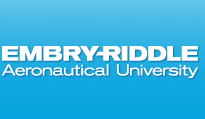Is this project an undergraduate, graduate, or faculty project?
Undergraduate
group
What campus are you from?
Daytona Beach
Authors' Class Standing
Joel Corrales, Senior Jacob Stover, Senior
Lead Presenter's Name
Jacob Stover
Faculty Mentor Name
Dr. Mark Grzegorzewski, PhD
Abstract
This presentation examines the disruptive potential of augmented reality (AR) and virtual reality (VR) in enhancing sensory information for decision-making, communication, situational awareness, and operational efficiency. The evolution of night vision technology is analyzed, from early military applications to contemporary advancements such as the US Army’s Enhanced Night Vision Goggle-Binocular or ENVG-Bs by L3 Harris. The limitations of traditional night vision devices are discussed, highlighting their overreliance on ambient light and challenges related to weight and stability. The Integrated Visual Augmentation System (IVAS) by Microsoft is introduced, featuring a comprehensive heads-up display that integrates GPS and situational data, which carries the potential to enhance training through virtual simulations, alleviating current logistical burdens. The potential of AR and VR to revolutionize civilian sectors, particularly in aviation, is also explored, with a focus on simplifying complex data input and enhancing pilot training and aircraft maintenance. Ultimately, the role of machine vision is introduced, suggesting that machines could effectively leverage AR technologies for maintenance analyses. The true disruptive potential of AR and VR lies in their applications, empowering individuals to make more informed decisions through enhanced data perception and analysis.
Did this research project receive funding support from the Office of Undergraduate Research.
No
Shattering Reality's Limits with the Revolutionary Potential of AR and VR
This presentation examines the disruptive potential of augmented reality (AR) and virtual reality (VR) in enhancing sensory information for decision-making, communication, situational awareness, and operational efficiency. The evolution of night vision technology is analyzed, from early military applications to contemporary advancements such as the US Army’s Enhanced Night Vision Goggle-Binocular or ENVG-Bs by L3 Harris. The limitations of traditional night vision devices are discussed, highlighting their overreliance on ambient light and challenges related to weight and stability. The Integrated Visual Augmentation System (IVAS) by Microsoft is introduced, featuring a comprehensive heads-up display that integrates GPS and situational data, which carries the potential to enhance training through virtual simulations, alleviating current logistical burdens. The potential of AR and VR to revolutionize civilian sectors, particularly in aviation, is also explored, with a focus on simplifying complex data input and enhancing pilot training and aircraft maintenance. Ultimately, the role of machine vision is introduced, suggesting that machines could effectively leverage AR technologies for maintenance analyses. The true disruptive potential of AR and VR lies in their applications, empowering individuals to make more informed decisions through enhanced data perception and analysis.


